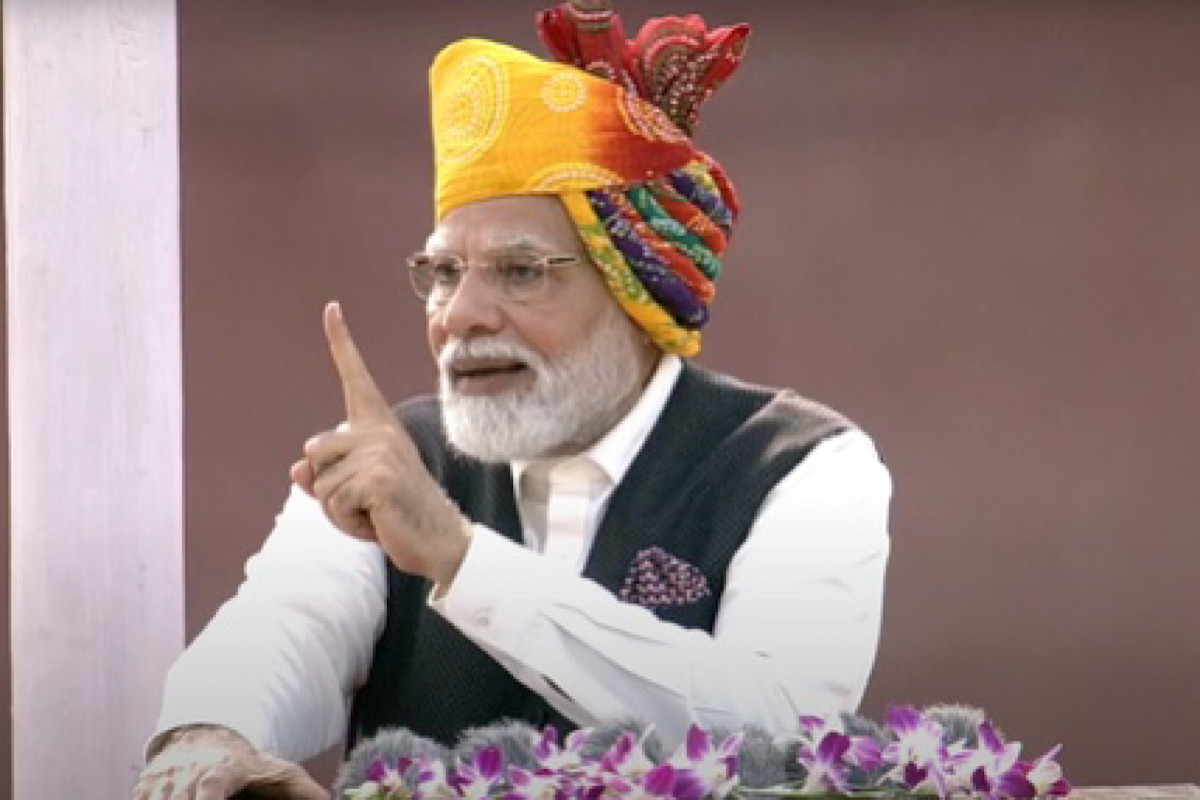Coinciding with Vishwakarma Jayanthi on 17 September this year, the government of India is launching its PM Vishwakarma scheme as if to satiate this divine architect and craftsman deity.
The boon, the quid pro quo, the government seeks from this God, looks to be the bountiful votes to the ruling party from the Other Backward Classes (OBCs), who constitute about 52 per cent of the population, in the coming elections to five state assemblies ~ Mizoram, Chhattisgarh, Madhya Pradesh, Rajasthan, and Telangana ~ toward this year-end and to the Lok Sabha later. The realization of the desire will depend on to what extent the target groups will receive or at least perceive to receive the benefits; the second is always more important to the politicians because it is this perception that they think generates the votes for them.
Advertisement
More so, since the scheme is slated to be implemented over five years 2023-24 to 2027- 28 and the list of categories of eligible trades is stated to be expanded, the hopes and expectations, but not the actual benefits, will be tangible before the elections. The people’s trust in the scheme is important to the party in power for the time being.
A closer look at the so far available details of the scheme suggests that it is unlikely to yield much benefit neither in quantitative nor in qualitative terms; not significant enough to woo voters from the target groups despite the hype being created to raise hopes of the entire OBC Community. Before going into the micro details of the scheme, let us first look at the macro factors to see how big or small is the scheme. The five-year outlay for the scheme is only Rs.13,000 crore which means Rs.2,600 crore per year in the entire country both in rural and urban areas. So, it is too small a sum compared to the size of the OBC class.
The scheme covers eighteen trades: 1. Carpenter (Suthar); 2. Boat Maker; 3. Armourer; 4. Blacksmith (Lohar); 5. Hammer and Tool Kit Maker; 6. Locksmith; 7. Goldsmith (Sonar); 8. Potter (Kumhaar); 9. Sculptor (Moortikar, stone carver), Stone breaker; 10. Cobbler (Charmkar) / Shoesmith/ Footwear artisan; 11. Mason (Rajmistri); 12. Basket/ Mat/ Broom Maker/Coir Weaver; 13. Doll & Toy Maker (Traditional); 14. Barber (Naai); 15. Garland maker (Malakaar); 16. Washerman (Dhobi); 17.Tailor (Darzi); and 18. Fishing Net Maker. These are the initially identified trades and more traditional ones are supposed to be included later. The Prime Minister said in his Independence Day speech a couple of days before the cabinet’s approval of the scheme that, “In the days to come, we will launch a scheme on Vishwakarma Jayanti, benefiting individuals skilled in traditional craftsmanship, particularly from the OBC community.
Weavers, goldsmiths, blacksmiths, laundry workers, barbers, and such families will be empowered through the Vishwakarma Yojana, which will begin with an allocation of around Rs 13-15 thousand crore.” But we do not see weavers in the initial trades list. Union minister Ashwini Vaishnaw says that the scheme is going to benefit 30 lakh families in all and five lakh families in the first year. This itself shows that the outlay is thinly spread. After all, poor spending cannot generate incommensurably high results leading to providing succor to the beleaguered OBCs in the country.
Furthermore, the proposed number of people to be covered is less than half of the official estimate of 70 lac artisan families in the country. If the unofficial figure of 20 crore is taken, the coverage would be a mere 3.5 per cent of artisans. That means only 3.5 per cent, if at all, will be happy with the scheme while the left out 96.5 per cent will be unhappy. Now, the micro details: the identified will get skill development training for 4-5 days with a stipend of Rs 500 per day. They will get another Rs 15,000 for the purchase of contemporary tools. Then, they will be given a PM Vishwakarma certificate and an ID card. They get a total subsidized loan of Rs 2 lakhs on cheap interest of 5 per cent; we do not yet know if any principal subsidy will be given in addition to the interest subsidy. This loan will not be given all at a time; Rs 1 lakh will be given first and another Rs 1 lakh depending on successful performance, regular repayment, etc., of the first tranche.
The beneficiaries are also assured of getting marketing support and incentives for digital transactions. The government has rightly identified the importance of the sector and the need to support the large section of the people depending on it for their livelihoods. However, it has grossly failed to identify and provide the right solution to the challenges the sector faces. True, India’s handlooms and handicrafts sectors are the second largest employment providers after agriculture in the country.
The handloom industry is the largest cottage industry in the country with 23.77 lakh looms. Undoubtedly a large number of people are in the handloom sector with a total of handloom worker households pegged at 31,44,839 as per the fourth handloom census (2019- 20). Their incomes are too meager for sustenance; 67.1 per cent of the weaver households get less than Rs 5,000 a month and another 26.2 per cent get incomes between Rs.5000 and Rs 10,000 and only 1.2 per cent get above Rs 20,000.
Yet, handlooms and handicrafts are fetching good foreign exchange to the nation. For instance, man-made textiles exports in 2021-22 were worth $6.3 billion and the handicrafts were worth $2.1 billion. The continuance of the guru-shishya tradition the government wants may appear a good idea on the face of it. But the government is unable to accept its impracticality for the simple reason that the products from artisans and cottage industries cannot compete in price and quality with those coming from modern industry. If a large number of people are continuing and depending on these traditional occupations it is not because of the love for it nor the lure of income they can generate. It is just because they are not able to find alternative employment.
Every parent in these occupations wants their children to have a modern education, and skills and be the part of modern economy and earn decent incomes. They do not want their children to feel it their destiny (karma) to lead a life with low incomes and no modern education. The peripheral support without getting into root causes are unlikely to yield any tangible results. If such schemes work, the earlier schemes and initiatives like handlooms and handicrafts development programmes, the Khadi and Village Industries Commission, National Rural Livelihood Mission, Deendayal Antyodaya Yojana-National Urban Livelihoods Mission the Skill India Mission and the like would have worked well and would have obviated the need for another programme like this
(The writer is a development economist and commentator on economic and social affairs)











